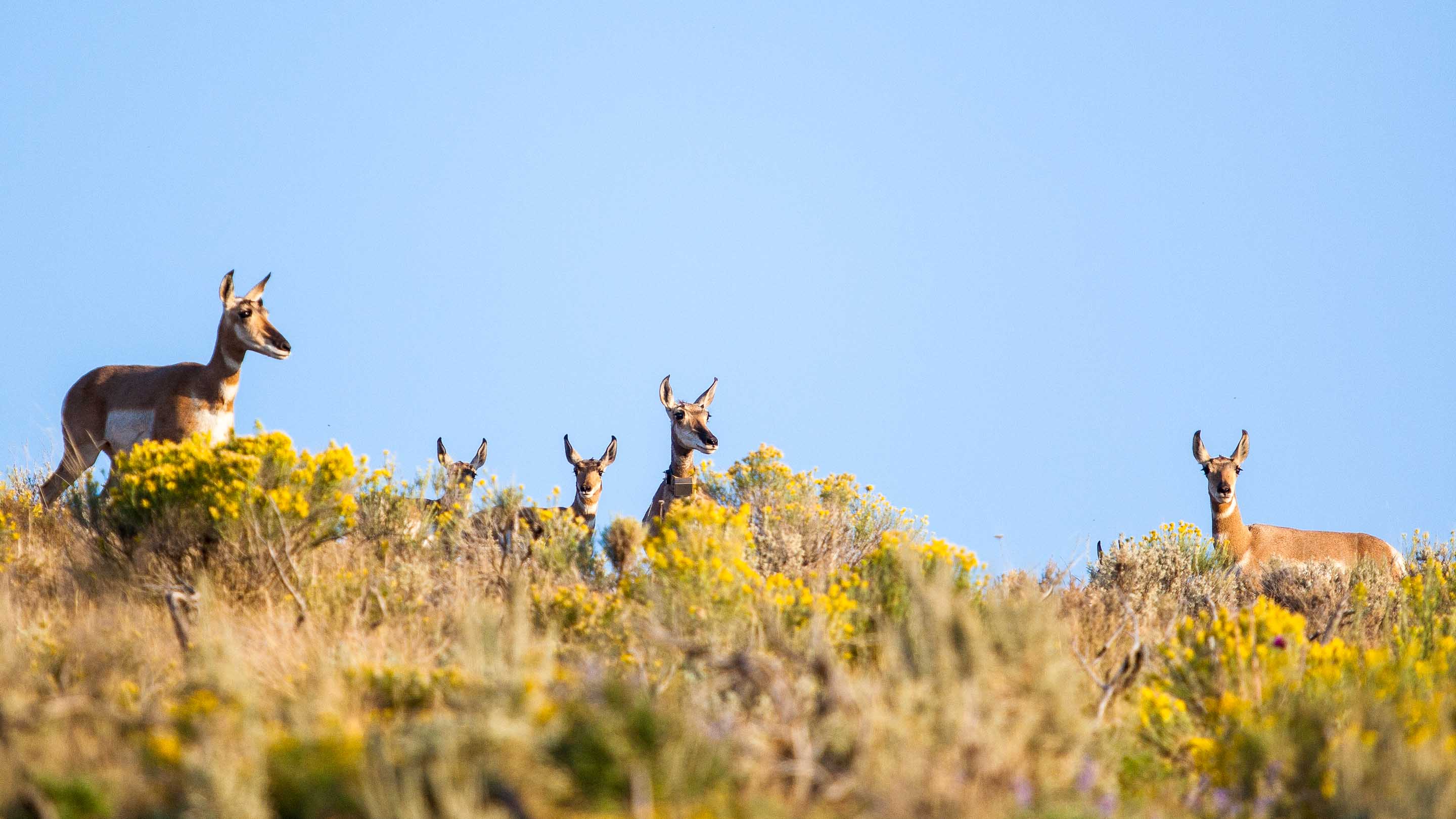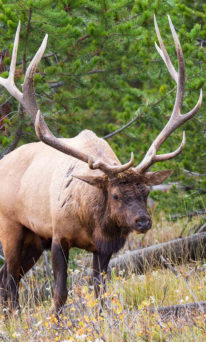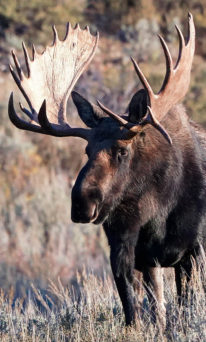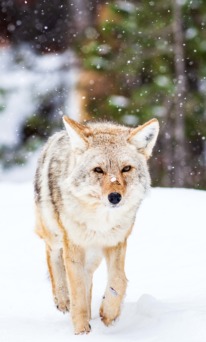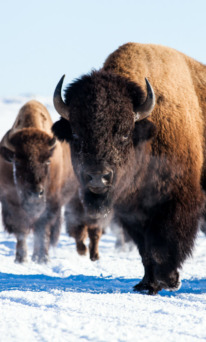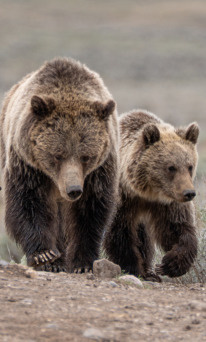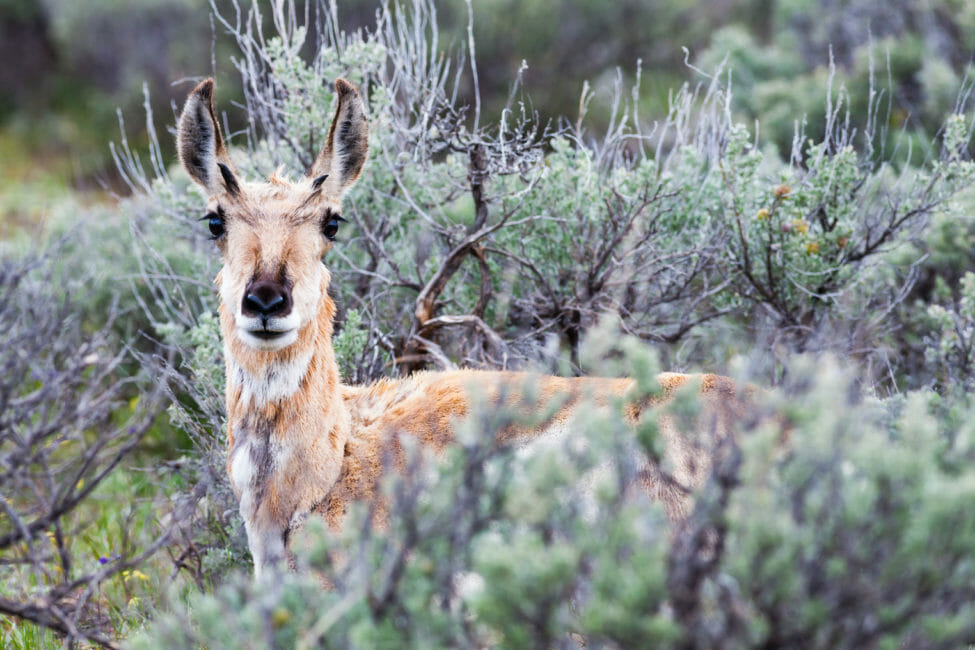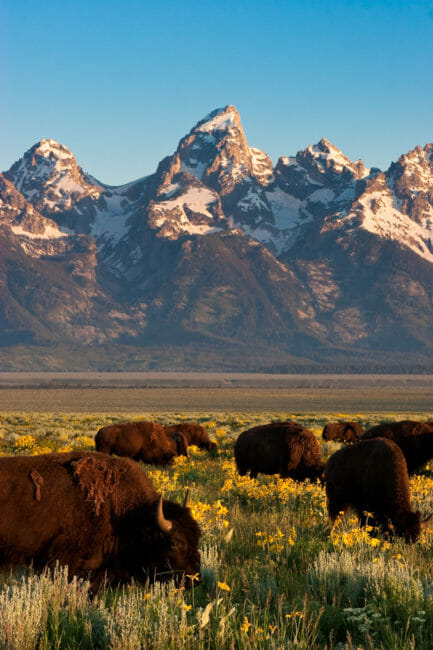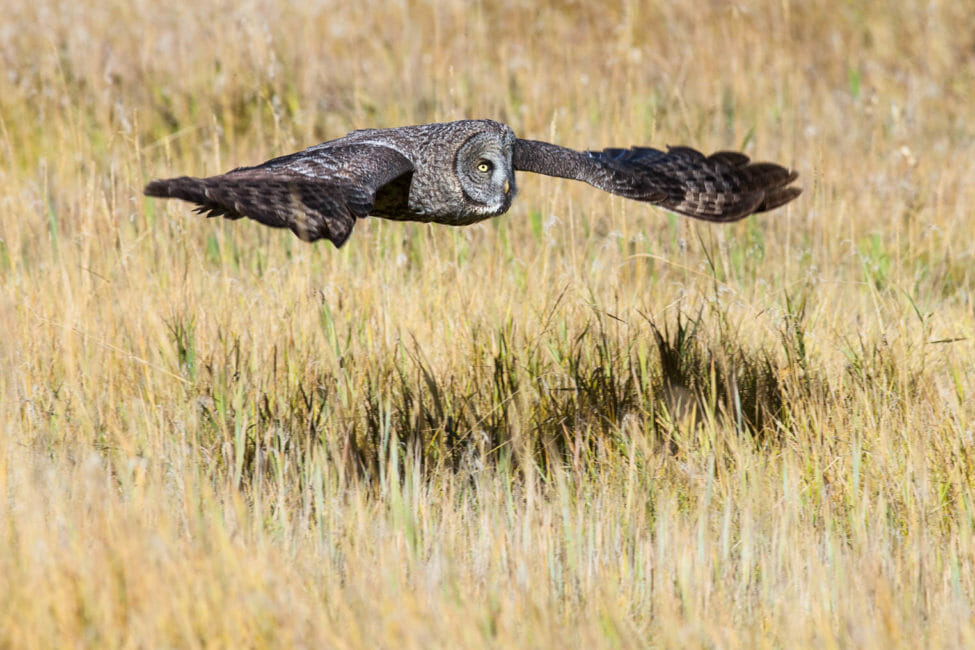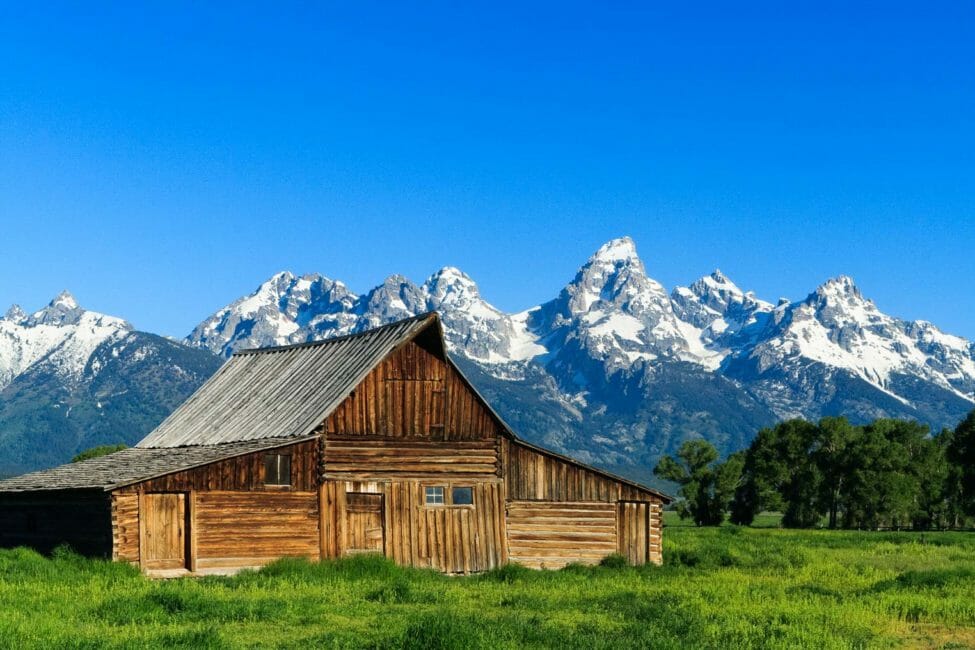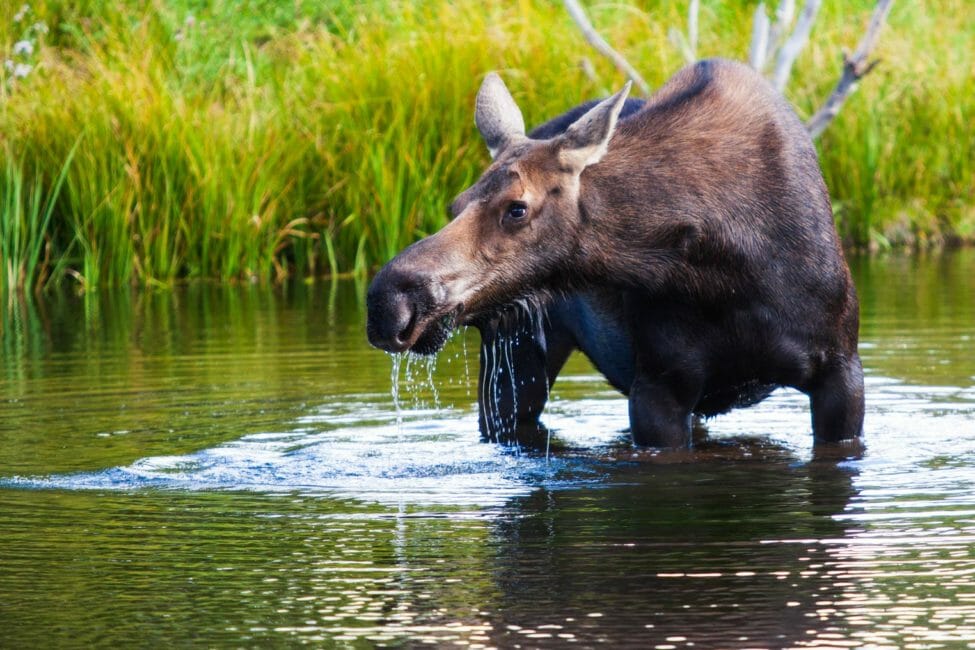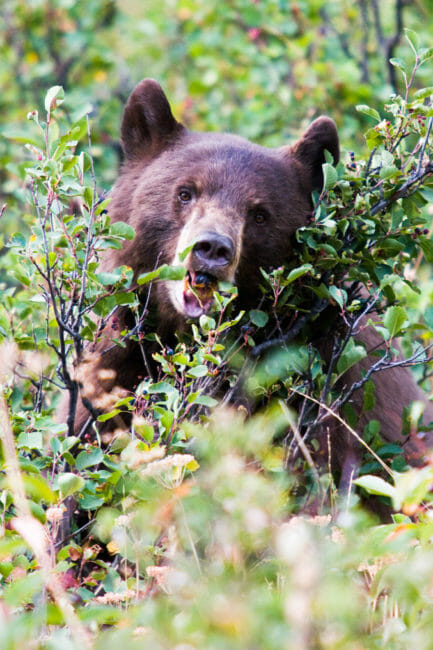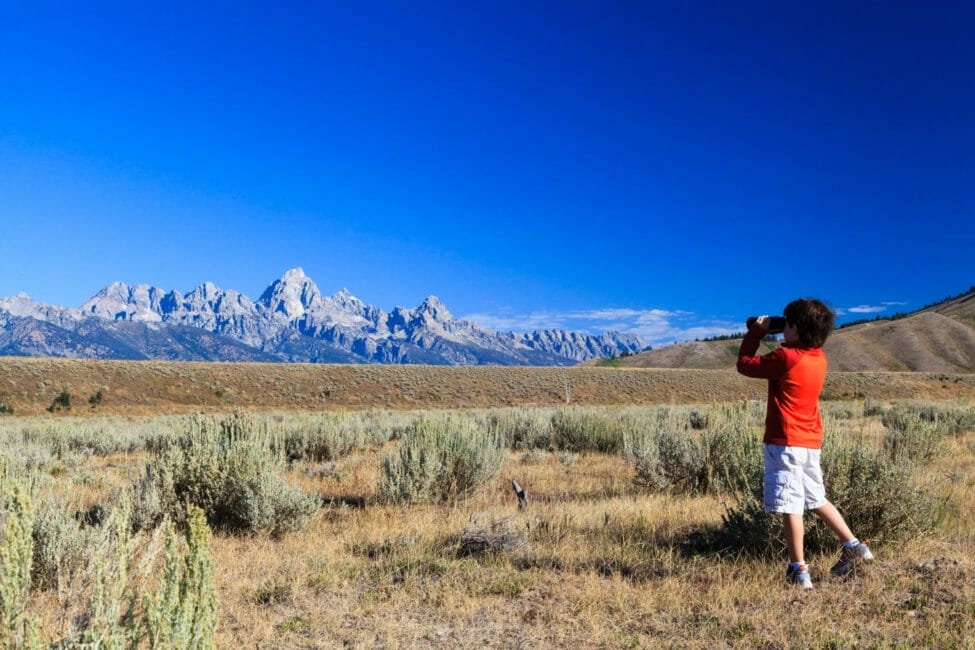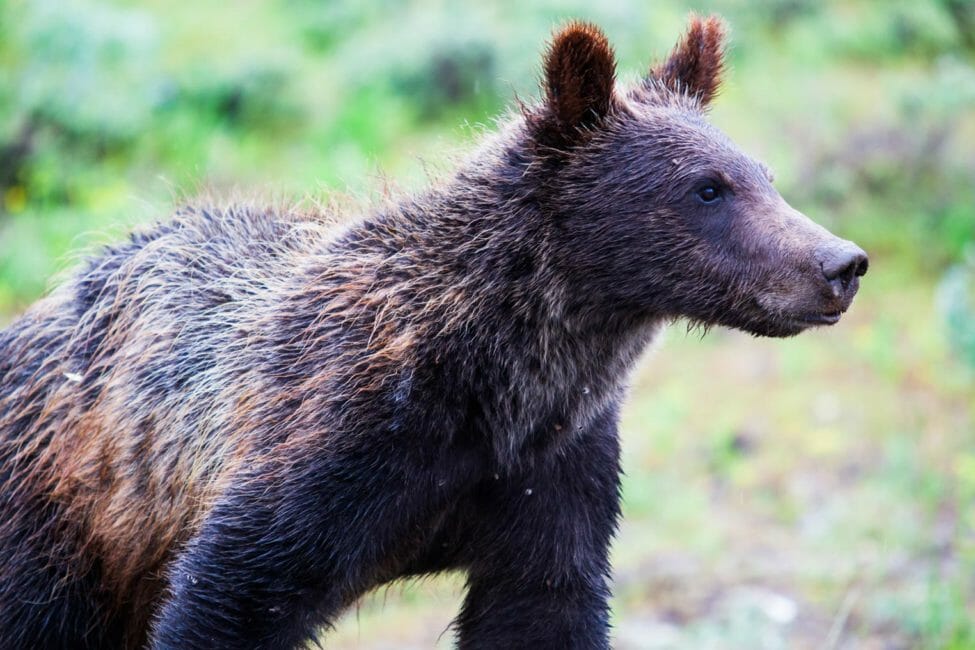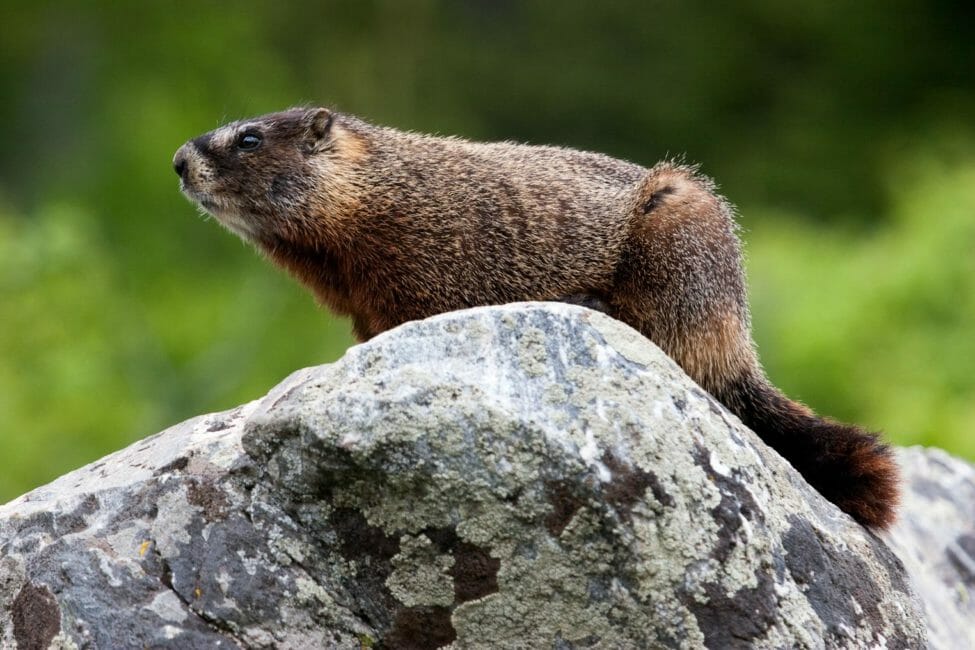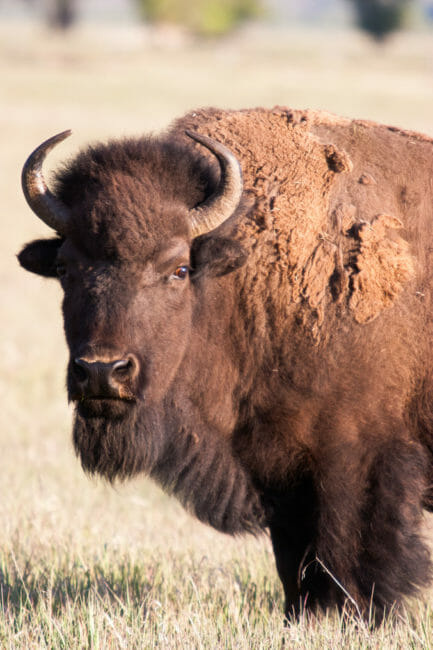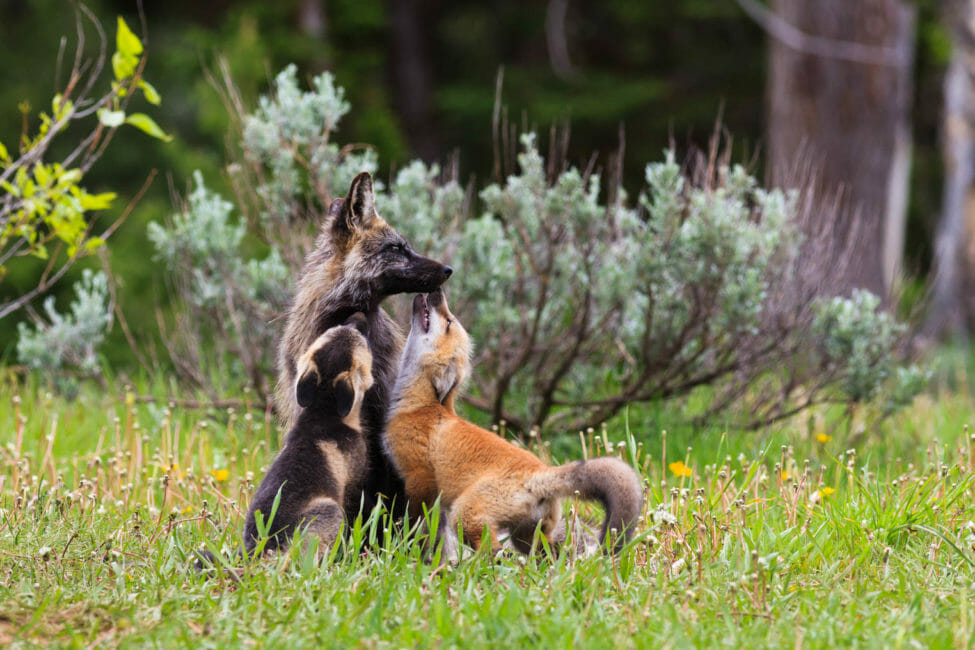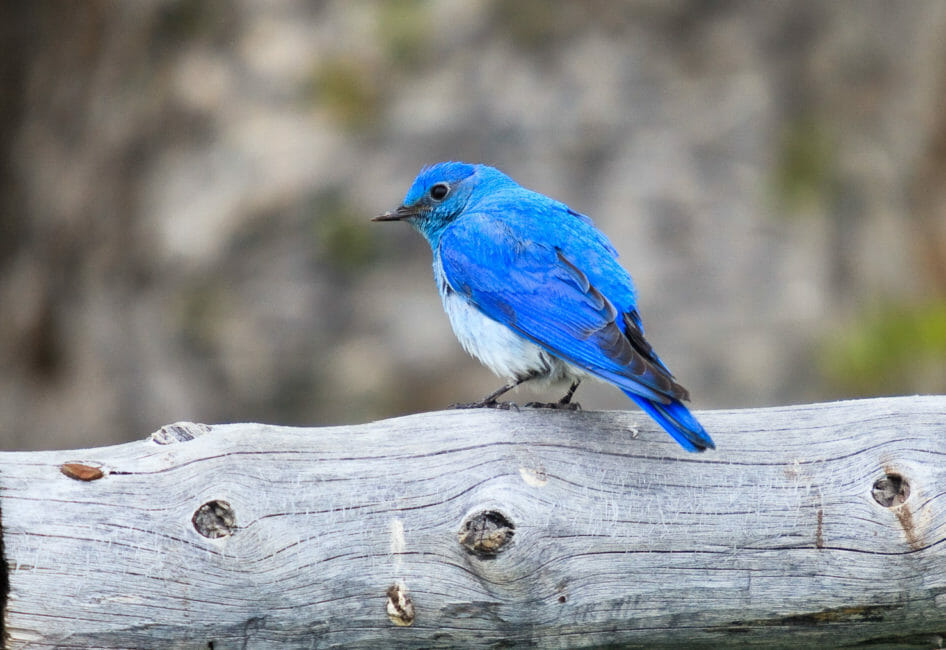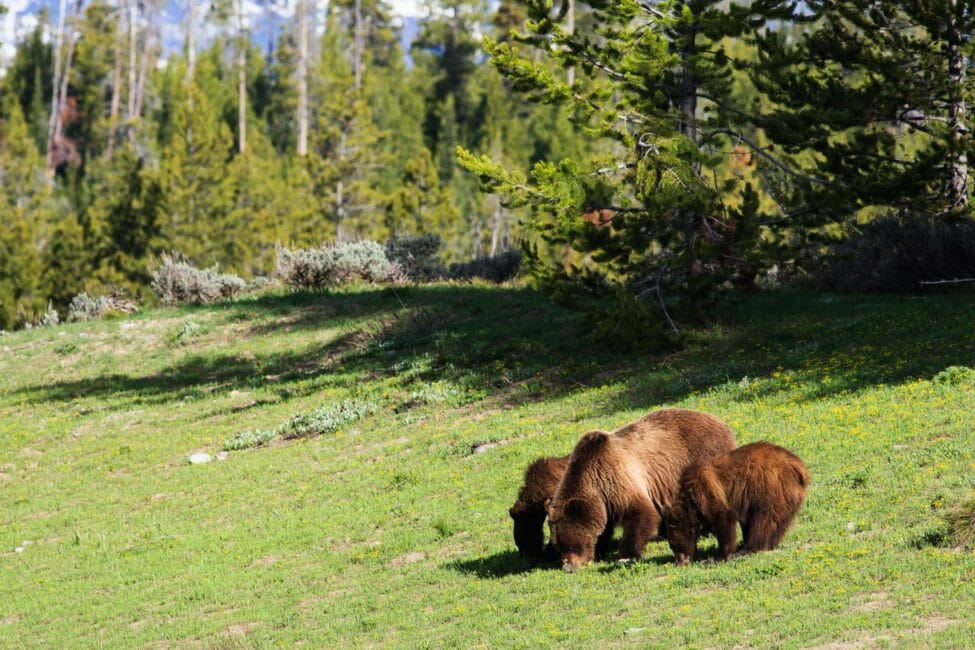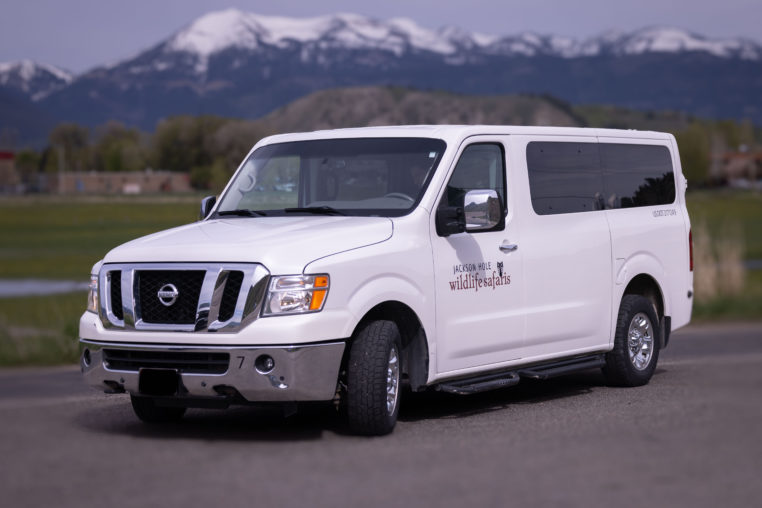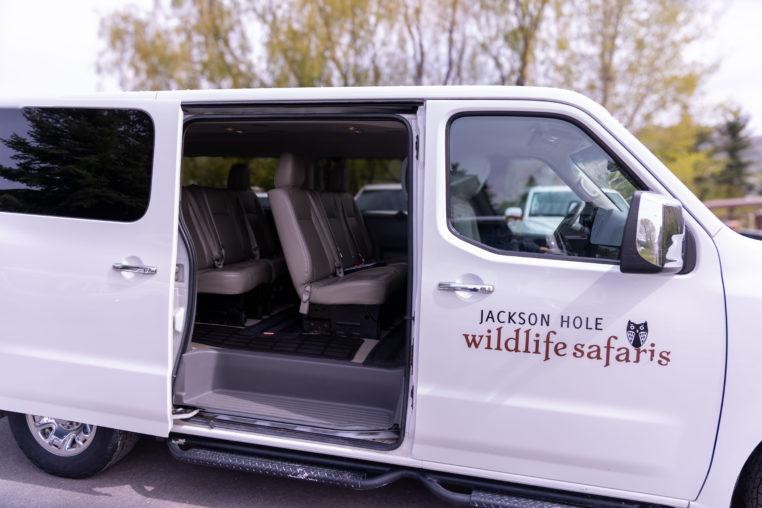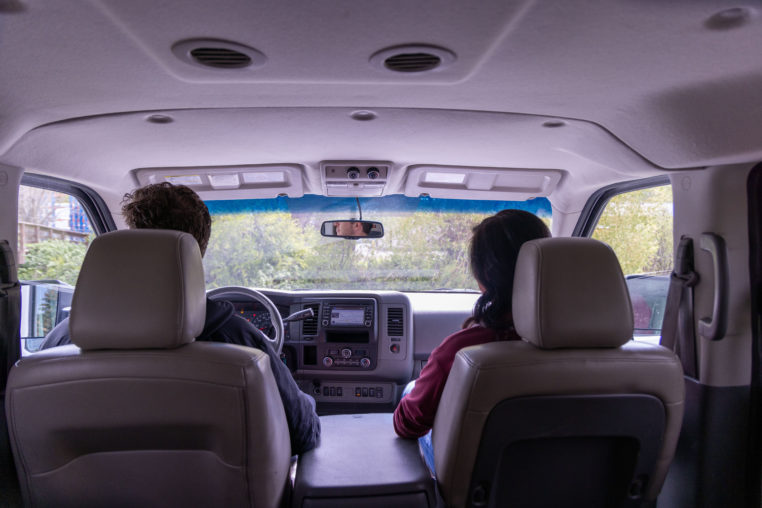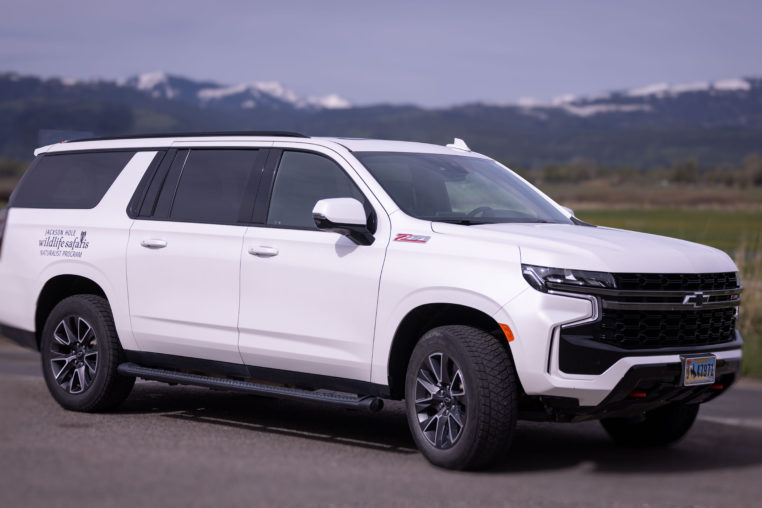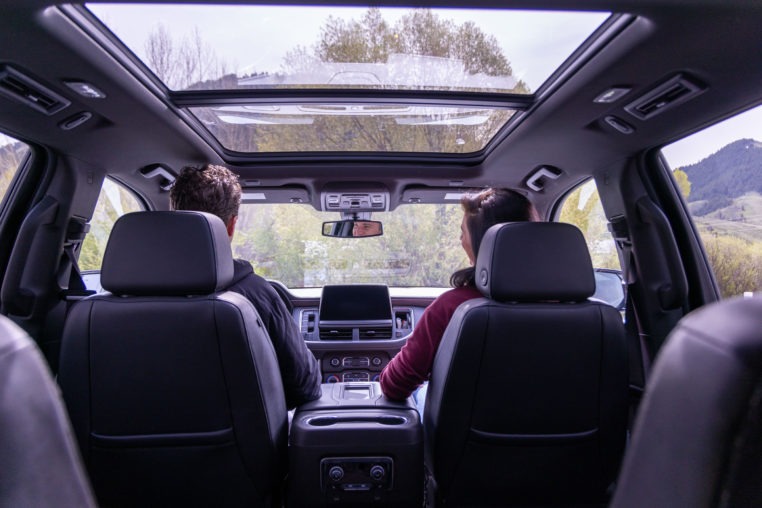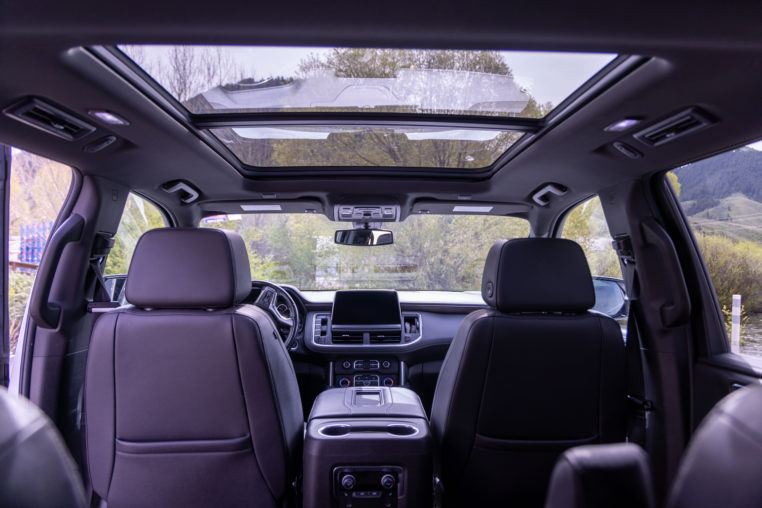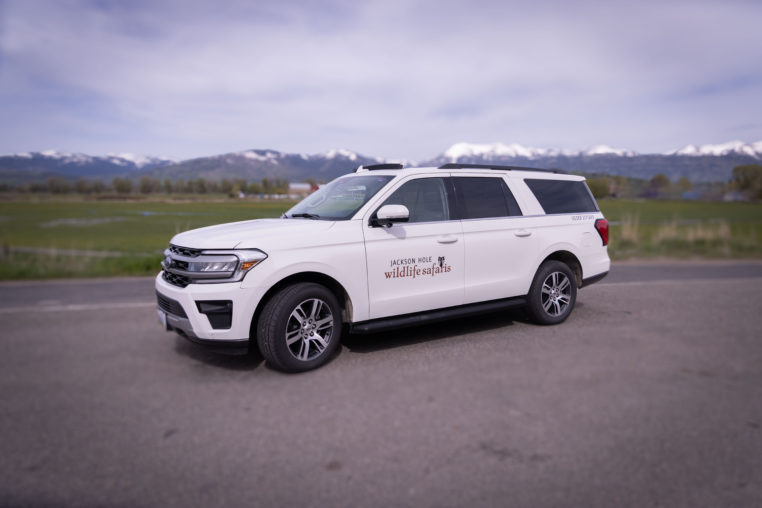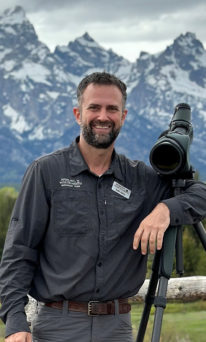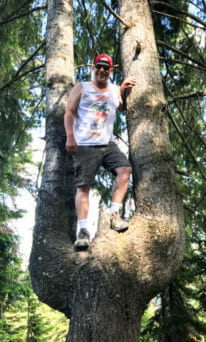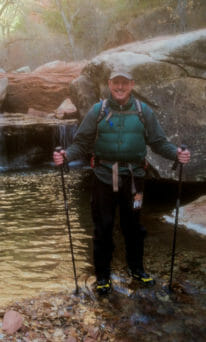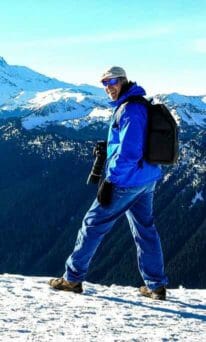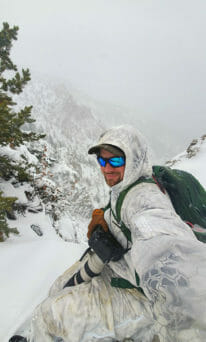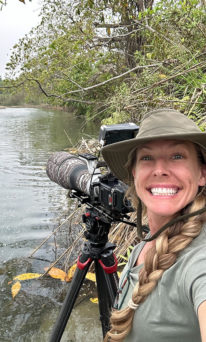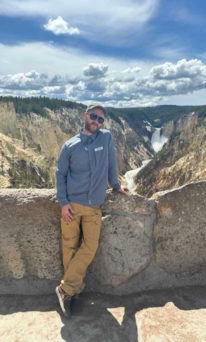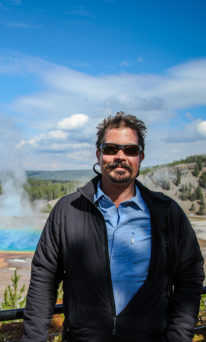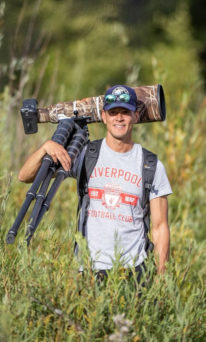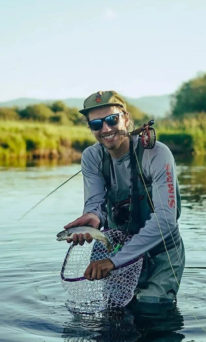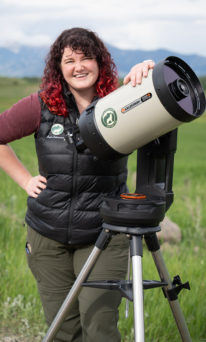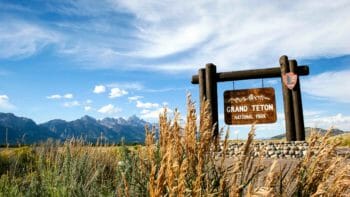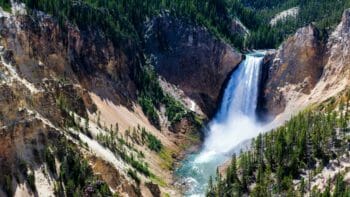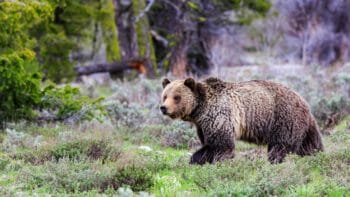Overview
Grand Teton National Park is ripe with geological wonders and an incredible variety of beautiful wildlife and their unique habitats. The familiar jagged peaks of the Teton Range form a beautiful backdrop from any vantage point, providing multiple photo opportunities for guests. This half day guided tour provides a great introduction to Grand Teton National Park and the surrounding area. As you journey through the park in search of wildlife, your guide will highlight the flora, fauna, history and geography that make Jackson Hole unique.
Highlights
- Wildlife Watching & Photo Opportunities
- Grand Teton Highlights
- Morning & Afternoon Departures
Currently, 310,000 acres of Jackson Hole are being preserved by the National Park Service. This includes not only a picturesque slice of Wyoming’s wild country, but a spectrum of flora and fauna species that are specially adapted to survive in the variety of habitats that comprise the region. The wildlife that can be found in Grand Teton National Park is an especially cosmic catalyst for visitation. Many travel from all around the world in hopes of observing incredible megafauna like bison, moose, elk, grizzly bears and gray wolves in their natural element. The experience of searching for wildlife is unlike any visit to a zoo. Here the animals are not in exhibits that emulate their native habitat for the viewer’s convenience. There is work and careful scrutiny required to sometimes spot even just a fleeting glimpse of an ear, antler or fur. There are no bars, no glass panes to separate the observer from the animal, instead common sense and close attention is required to avoid incentivizing a potential attack. This is what makes seeing wildlife in places like Grand Teton National Park such a once in a lifetime experience.
Different seasons and different habitats hold the potential for different wildlife sightings. During spring a greater variety of animals reside within the valley floor of Grand Teton National Park. Due to the surrounding mountains being snow capped until July, species like elk will browse throughout lower grasslands until those higher elevations thaw out and more foraging becomes accessible. Grizzly and black bears will emerge from their hibernation dens throughout late April and into May, they are typically lethargic and hungry those initial few weeks after being rousted. The bears will amble around the valley, looking for early season food sources such as biscuitroot, spring beauties, grasses and clover. The more predatory grizzly bear may also be hunting for easy prey, which could entail digging up still hibernating Uinta ground squirrels from their burrows, feeding on carrion of animals that passed during the brutal winter or perhaps hunting down elk or bison calves that are typically born throughout May and June. Elk calves and carrion are also prime meals for other carnivores such as the gray wolf, which will move with the migrations of their prey throughout the seasons.
As the heat of summer increases the snow lines recede and animals like the elk, wolf, bears and occasionally even bison begin to move into the hill country. Viewing them may require scouring mountainsides with high powered optics like spotting scopes. Moose, on the other hand, will settle in their summer homes near riverways and ponds, forging on aquatic vegetation along with the tender twigs of willow shrubs and cottonwood trees. Other wildlife to potentially spot around aquatic habitats would be bald eagles, river otters, beavers, trout and a broad variety of waterfowl that migrate from the southern region of the continent. Other migrators that show up in Jackson Hole for the summer season include sandhill cranes, osprey, western meadowlarks (the state bird of Wyoming!) and pronghorn- which is the fastest land mammal in North America. The pronghorn, which are often dubbed “antelope” or “speed goat” even though they are genetically a separate species from both, spend their winters 150 miles southeast of Grand Teton National Park. They are not as well adapted as moose, bison or elk to survive the extreme winter that seasonally consumes Jackson Hole.
Autumn eventually arrives, bringing a chill that relieves the parched landscape of dry heat. Wildlife that trekked into the mountains for cooler temperatures and better foraging begin to return to the valley floor. Many species enter the exciting phase known as the “rut”, the breeding season. Bison kick it off in late summer, while bull elk and moose start courting females throughout September and October. This is a period when wildlife is often most vocal and potentially most violent. Males will be warding off competitors with bugles and bellows, with physical altercations following if two strong, stubborn suitors meet. Black and grizzly bears on the other hand will be busy eagerly seeking out food sources in preparation for hibernation. A variety of berries ripen in fall, providing perfect foraging to satiate these hyper-hungry bears.
Regardless of the season and the wildlife, Grand Teton National Park has much to offer. There are geographically striking views from nearly every vantage point in the valley, ranging from jagged, high alpine peaks to meandering, rushing rivers to deep crystalline lakes. As well as a rich anthropological history that starts nearly 11,000 years ago with the seasonal presence of indigenous people, which eventually shifted to the expansion of human development from the east as homesteaders fought their way into the valley, and now exists as a unique natural space that tourists seek out to get a taste of a western world that still consists of more wild than civilization.
A Half Day Wildlife Safari will try to give you a taste of it all in just 4 hours. The route will vary depending on weather conditions and the season, as both influence the visibility of scenery and wildlife. But trust our experienced guides will know the most fortuitous locations to make the most of the tour.
What's Included
-
Hotel pickup
-
Professional naturalist guide
-
Small group safari: 8 guests per vehicle, maximum
-
Light breakfast
-
Assorted snack basket
-
Hot and cold beverages
-
Use of UHD binoculars and spotting scopes
-
Guide gratuities
-
National Park entrance fees
Public Safari
Private Safari
Tour Information
What time is my hotel pickup?
All guests are picked up and returned to their place of lodging. We pick up at hotels and condos in Jackson and Teton Village. Your exact pickup time will be determined by your hotel location and the season. Please make note of your pickup time, and save it for your reference.
Please be ready and waiting in the hotel lobby a few minutes before your pickup. Please allow an additional 5-10 minutes for your guide to arrive just in case they are delayed for any reason. Changes to trip timing may be made to accommodate daylight and/or optimum wildlife viewing.
Approximate pickup times for Jackson Hole include:
May 1 – May 14
Morning Wildlife Safaris
- 6:30 AM – Teton Village locations
- 6:45 AM – Wilson, Aspens, Amangani and Spring Creek locations
- 7:00 AM – Town of Jackson locations
Afternoon Wildlife Safaris
- 3:30 PM – Teton Village locations
- 3:45 PM – Wilson, Aspens, Amangani and Spring Creek locations
- 4:00 PM – Town of Jackson locations
May 15 – September 14
Morning Wildlife Safaris
- 6:30 AM – Town of Jackson locations
- 6:45 AM – Wilson, Aspens, Amangani and Spring Creek locations
- 7:00 AM – Teton Village locations
Afternoon Wildlife Safaris
- 3:30 PM – Town of Jackson locations
- 3:45 PM – Wilson, Aspens, Amangani and Spring Creek locations
- 4:00 PM – Teton Village locations
September 15 – October 31
Morning Wildlife Safaris
- 7:00 AM – Town of Jackson locations
- 7:15 AM – Wilson, Aspens, Amangani and Spring Creek locations
- 7:30 AM – Teton Village locations
Afternoon Wildlife Safaris
- 2:00 PM – Town of Jackson locations
- 2:15 PM – Wilson, Aspens, Amangani and Spring Creek locations
- 2:30 PM – Teton Village locations
Private safari guests are picked up at 6:30 AM and 3:30 PM from May 1 – September 14, and at 7:00AM and 2:00 PM from September 15 – October 31.
What is the itinerary?
Your exact route and itinerary will be determined by your interests, current wildlife sightings, and current weather and road conditions. Our guides are all highly experienced, with thousands of hours in the field, and will expertly tailor your safari to you and your group.
In The Wild
Spotted on Safari
Our guide picked us up and we saw more wildlife with him in a few hours than we had seen in 2 days on our own. He was very polite and professional. He shared a plethora of information on the area and the wildlife. Would definitely go on one of his trips again... and again!
Safari Tour Gallery
All photography has been shot by our talented tour guides.
FAQs
Is a half-day summer tour enough time to see Jackson Hole?
A half day tour is not nearly enough time to explore all that Jackson Hole has to offer, however, if your time is limited, it’s a great way to get a brief intro to Grand Teton National Park and the area surrounding Jackson. For some people, a half day offers just enough time to see some of the highlights, while taking note of all the things they’d like to explore the next time they come.
Does the Jackson Hole half-day summer tour stop for photos?
Our guides will make multiple stops along the way for wildlife watching, historic sites, geologic formations or any other areas of interest, always making sure that we’re in an ideal location for our guests to get out and observe wildlife from a safe distance. If photography is your focus, we also offer photography-specific tours. If you wish to stop for certain photos, make sure to let your guide know and they will search out an ideal location to do so. Private tours offer greater flexibility for guests to customize the experience. If you’d like to have more time in a certain location, or more time for photos, you might also consider booking a private safari tour.
What do others say about this tour?
Guests consistently describe their safaris with Jackson Hole Wildlife Safaris as one of the most memorable highlights of their visit to Jackson Hole and Grand Teton National Park. Our professional naturalist guides are praised for their in-depth knowledge of wildlife, ecology, and geology, and for making each tour engaging with stories, insights, and a personalized approach.
Wildlife sightings are a frequent highlight, with visitors often encountering moose, elk, bison, bears, pronghorn, eagles, and more. Guests appreciate that high-quality binoculars are provided, making it easy to enjoy every moment of the experience.
Reviews also emphasize the professionalism and care that define our tours, from timely departures and clean, comfortable vehicles to thoughtful touches like snacks and drinks along the way. Families especially value the way our guides connect with younger travelers, turning each outing into an educational and fun adventure.
Above all, guests highlight the comfortable pace, attention to detail, and passion of our guides, which combine to create wildlife tours that are not only informative but unforgettable.
What is the best way to tour Grand Teton National Park?
The best way to tour Grand Teton National Park is with a guided wildlife safari. Expert guides provide local insight, know where to find wildlife, and take care of the driving so you can relax and enjoy the views. Whether you choose a half-day, full-day, or custom tour, going with a guide helps you make the most of your time in the park—especially if you’re hoping to spot animals like moose, bears, or eagles, and learn about the area’s natural and cultural history along the way.
What do I need to know before visiting Grand Teton?
Before visiting Grand Teton National Park, it’s good to be prepared for changing weather, high elevations, and wildlife encounters. Dress in layers, carry bear spray, and always stay a safe distance from animals. Cell service is limited in many areas, so download maps ahead of time. Park entrances require a pass, and popular spots can get busy—arriving early helps avoid crowds. For a deeper experience, consider a guided tour to learn about the park’s wildlife, geology, and history while exploring safely and responsibly.
Is there hiking on the half day tour in Grand Teton?
Jackson Hole Wildlife Safaris’ half-day tours in Grand Teton National Park include opportunities for short walks to scenic viewpoints and wildlife viewing spots. While the primary focus is on wildlife observation from a comfortable vehicle, these brief excursions allow guests to stretch their legs and immerse themselves in the park’s natural beauty. The exact stops and duration of these walks depend on current wildlife sightings and weather conditions.
What is the best month to visit Grand Teton?
It’s hard to say which month is the best to visit Grand Teton National Park, but typically June through September, when the weather is mild and the views are spectacular. July and August are the peak months for visitors, offering the best conditions for hiking and outdoor activities. However, for fewer crowds, stunning fall colors, and lots of elk activity, late September can be an excellent choice. Spring, from May to early June, is also great for spotting newborn animals and experiencing the park before it gets busy.
Vehicles & Optics
Our Vehicles
At Jackson Hole Wildlife Safaris we use top-of-the-line vehicles designed to enhance your wildlife safari experience while ensuring comfort and safety. These rugged and comfortable vehicles feature expansive windows, giving you unobstructed views of the incredible wildlife and stunning landscapes of Jackson Hole. We use small passenger vans and SUVs for small group sizes to accommodate a personalized experience. With high-clearance capabilities, the vehicles can easily navigate any terrain we encounter, ensuring a smooth and stable ride through the area’s remote spots. Spacious seating, climate control, and knowledgeable guides ensure a comfortable, immersive experience, allowing you to connect with nature while minimizing your impact on this beautiful, pristine environment.
Our Optics
Jackson Hole Wildlife Safaris provides top-tier binoculars and spotting scopes for their tours to ensure guests have the best possible viewing experience of wildlife in the stunning landscapes of the region. We utilize high-quality, durable optics that offer sharp, clear images, even at long distances, making it easier for guests to spot elusive animals and enjoy close-up views of birds, mammals, and other wildlife. Our Athlon binoculars are lightweight and easy to handle, perfect for all ages and experience levels. The Vortex spotting scopes, equipped with powerful magnification, allow for exceptional detail when observing wildlife from afar. These professional-grade tools enhance the overall safari experience, giving guests a front-row seat to the beauty of Jackson Hole’s natural world.
Guides and Staff
Our Team
Local, experienced, and passionate guides and photographers.
Further Reading
Jackson Hole Wildlife Safety and Etiquette
Jun 19, 2019
Jackson Hole, Grand Teton National Park and Yellowstone National Park are all full of exciting things to do, see and try. It is a unique place, therefore safety and etiquette are likely a bit different than back home and should be examined before venturing out.
Everything You Need to Know about Grand Teton Tours
Aug 25, 2021
Grand Teton National Park preserves 310,000 acres of some of the most striking alpine landscape in Wyoming. Simply driving along Highway 191, views of open, undeveloped sagebrush steppe, winding rivers, and jagged mountain peaks are impossible to avoid.

